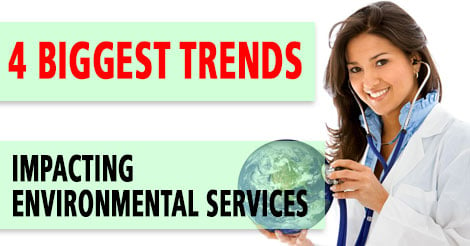Heads of environmental services at hospitals, nursing care facilities and other healthcare environments have numerous hurdles to overcome on a daily basis. Their business decisions are changing as new trends pose new challenges for nurses, caretakers and administrators.
Here are the biggest trends impacting Environmental Services (In the US):
1. Larger number of aging and older patients
 A report compiled by the National Center for Health Statistics and other federal health organizations revealed that while the population of the U.S. has grown to 321.4 million in 2015, the percentage of males and females age 65 and older has increased compared to 30 years ago. The report showed there was more than two times the number of U.S. adults age 65 and older in 2015 than in 1975, with 47.8 million in 2015.
A report compiled by the National Center for Health Statistics and other federal health organizations revealed that while the population of the U.S. has grown to 321.4 million in 2015, the percentage of males and females age 65 and older has increased compared to 30 years ago. The report showed there was more than two times the number of U.S. adults age 65 and older in 2015 than in 1975, with 47.8 million in 2015.
This rise in an overall older population because of advances in medical technology and treatment that has prolonged lifespans has led to larger aging patient numbers. Furthermore, the proportion of adults age 65 and over in the population is projected to grow with an estimated 1 in 5 Americans expected to be older than 65 by 2030.
2. Greater HIPAA protection and enforcement
With the passage of the Health Insurance Portability and Accountability Act (HIPAA), healthcare providers and other employees must protect patient privacy and medical information. When serving food, cleaning rooms or providing other housekeeping services, environmental services staff should respect the rules of HIPAA. In more recent years, the Office for Civil Rights of the U.S. Department of Health and Human Services has placed greater emphasis on the enforcement of the HIPAA privacy rules.
Violation of these privacy and security rules for protected health information could lead to fines and penalties. The OCR has settled 52 cases of HIPAA covered entities and their business associates who were noncompliant with these rules for a total amount of almost $73 million. These entities included major medical centers, hospital chains and more.
3. Growing population of larger/heavier patients
According to the Centers for Disease Control and Prevention, about 36.5 percent of U.S. adults are considered obese. Health conditions associated with obesity include heart disease, type 2 diabetes and stroke. With the rise of obesity in the U.S., those in charge of environmental services in care facilities must be prepared to handle these patients and keep rooms up to standards. This includes offering sheets that will fit patients no matter their weight or height.
To accommodate patients of all sizes, hospitals could look into stretchier fabric and sheets that can fit several mattress sizes like the UltraKnit Optimum Sheet for added versatility.
4. More focus on infection prevention

Environmental services can play a major role in the prevention of infection. To avoid the spread of communicable diseases and other preventable illnesses, environmental services staff should be more focused on policies and procedures that prevent infection in the first place. (see also: TOP 10 WAYS TO MINIMIZE RISKS OF INFECTION IN A LONG TERM CARE FACILITY)
With these trends affecting environmental services, healthcare providers should determine whether their current needs—whether staff or supplies—are met now and in the future.








